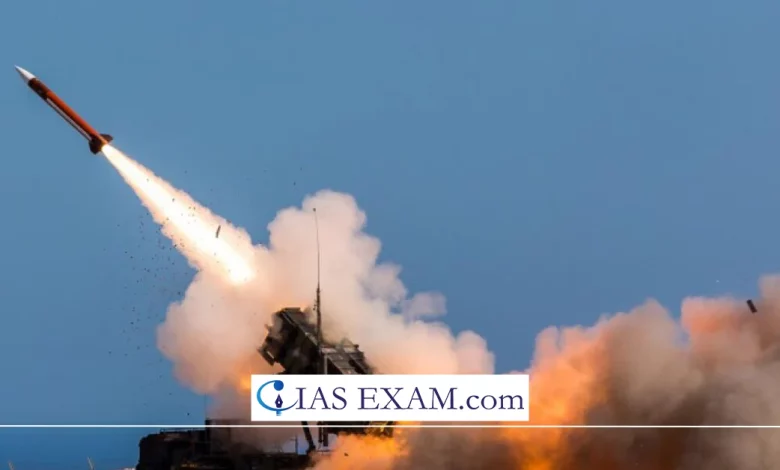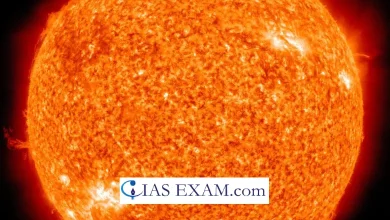Daily Current Affairs for UPSC
Hypersonic Missiles used by Russia on ‘Kyiv’
Syllabus- International Relations [GS Paper-2]

Context
According to the military administration of Ukraine, Russia has used five of its new hypersonic Zircon missiles to attack Kyiv since the start of the year.
Hypersonic weapon
- They are commonly defined as fast, low-flying, and highly manoeuvrable weapons designed to be quick and agile for conventional missile defence systems to detect in time.
- Unlike ballistic missiles, hypersonic weapons don’t comply with a predetermined, arched trajectory and can manoeuvre on the way to their destination.
- The term hypersonic describes any speed faster than 5 times that of sound, that is roughly 760 miles (1,220 km) per hour at sea level.
- On the other hand, a supersonic missile travels at the speed between Mach 1 and Mach 5.
- At hypersonic speeds, the air molecules around the flight vehicle start to change, breaking apart or gaining a charge in a process called ionization.
- This topics the hypersonic missiles to remarkable stresses as it pushes by the atmosphere.
Types of hypersonic weapons
- There are two main types of those weapons – glide vehicles and cruise missiles.
- Glide missiles are launched from a rocket before gliding to their targets. This is due to the challenges of accomplishing hypersonic propulsion of missiles.
- The missiles have engines known as scramjets that use the air’s oxygen and produce thrust in the course of their flight, allowing them to cruise at a constant speed and altitude.
Countries having hypersonic weapons
- US, China and Russia have the most superior skills.
- Several other countries are testing the technology, such as India, Japan, Australia, France.
- North Korea claims to have tested a hypersonic missile.
India and hypersonic weapon
- India is closing in on having such weapons in its arsenal.
- In 2020, India successfully tested its hypersonic technology demonstrator vehicle (HSTDV), powered by a scramjet engine.
- The HSTDV will function as a crucial building block in the development of long-range hypersonic weapons, to be able to take some other 4 to 5 years to become a reality.
Kinzhal
- Kinzhal is an air-launched hypersonic missile with a mentioned range of 1,500-2,000km.
- This missile can fly at 10 times the speed of sound and can overcome air-defence systems.
- Following launch, the Kinzhal swiftly quickens to Mach 4 (4,900 km/h), and can reach hastens to Mach 10 (12,350 km/h).
- The speed of the missile, combined with its erratic flight trajectory and excessive manoeuvrability, could complicate interception.
- It can carry a nuclear payload of 480 kg. This is 33 times the yield of the Fat Man bomb dropped on Hiroshima.
Zircon
- According to Russia, the sea-based Zircon missiles have a range of 1,000 km and travel at 9 times the speed of sound.
- If Russia’s claims are real, the Zircon missile should prevent the advanced US Patriot air defence system.
- This is due to the fact, hypersonic pace can substantially lessen response time for air defences.
- Basically, Zircon is a hypersonic cruise missile that is powered by a scramjet engine.
- Scramjet engine uses the drift of air at supersonic speeds, compressed by the ahead motion of the missile, to force it ahead.
- It reportedly includes a 300kilogram warhead.
Source: The Hindu
UPSC Mains Practice Question
Q.What are Hypersonic Missiles? Discuss their significance and the challenges in their adoption and use.(150 words)





.png)



